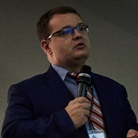Imaging of Skin Diseases
A special issue of Medicina (ISSN 1648-9144). This special issue belongs to the section "Dermatology".
Deadline for manuscript submissions: 30 June 2024 | Viewed by 2461
Special Issue Editors
Interests: pruritus; psoriasis; connective tissue diseases; psychodermatoses; pediatric dermatology, dermato-oncology
Special Issues, Collections and Topics in MDPI journals
Special Issue Information
Dear Colleagues,
In recent years, the incidence of skin cancers has increased worldwide. Despite the huge progress in novel treatment modalities dedicated to patients, fast diagnosis remains a crucial factor in the treatment’s success.
Over recent decades, the development of new skin-imaging techniques significantly improved the diagnosis of benign and malignant cutaneous neoplasms. Nowadays, dermatoscopy is considered the so-called gold standard for skin cancer evaluation. However, other non-invasive technologies have great potential, such as reflectance confocal microscopy or optical coherence tomography. Moreover, with recent teledermatology and artificial intelligence (AI) advancements, it is expected that AI-powered devices may be part of standard diagnostic procedures in the near future. Novel diagnostic techniques also offer the possibility to better visualize, diagnose and analyze other dermatoses, being currently employed in the treatment of inflammatory skin, hair and nail disorders.
This Special Issue will discuss the latest skin imaging techniques and their places in modern dermatology.
Prof. Dr. Adam Reich
Dr. Dominika Kwiatkowska
Guest Editors
Manuscript Submission Information
Manuscripts should be submitted online at www.mdpi.com by registering and logging in to this website. Once you are registered, click here to go to the submission form. Manuscripts can be submitted until the deadline. All submissions that pass pre-check are peer-reviewed. Accepted papers will be published continuously in the journal (as soon as accepted) and will be listed together on the special issue website. Research articles, review articles as well as short communications are invited. For planned papers, a title and short abstract (about 100 words) can be sent to the Editorial Office for announcement on this website.
Submitted manuscripts should not have been published previously, nor be under consideration for publication elsewhere (except conference proceedings papers). All manuscripts are thoroughly refereed through a single-blind peer-review process. A guide for authors and other relevant information for submission of manuscripts is available on the Instructions for Authors page. Medicina is an international peer-reviewed open access monthly journal published by MDPI.
Please visit the Instructions for Authors page before submitting a manuscript. The Article Processing Charge (APC) for publication in this open access journal is 1800 CHF (Swiss Francs). Submitted papers should be well formatted and use good English. Authors may use MDPI's English editing service prior to publication or during author revisions.
Keywords
- dermoscopy
- capillaroscopy
- inflammoscopy
- skin sonography
- reflectance confocal microscopy
- optical coherent tomography
- optoacoustic mesoscopy
- atomic force microscopy







